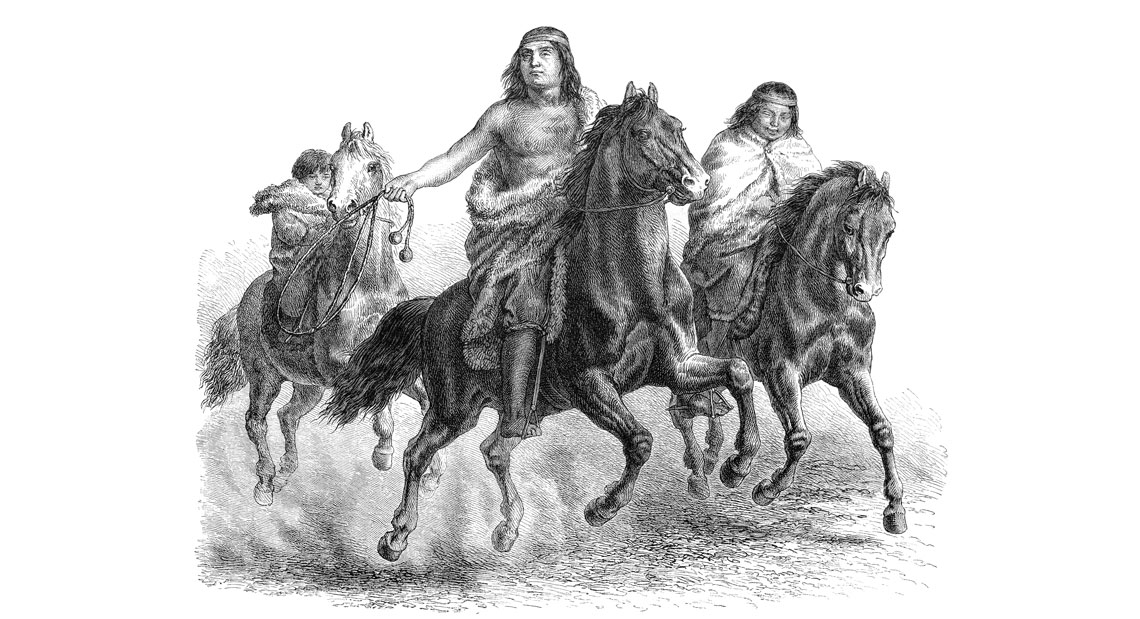
A Tehuelche family rides across the Patagonian plains in this 1880s engravingBildagentur-Online / Universal Images Group via Getty Images
British accounts from the eighteenth century report that nomadic Indigenous people from southern Argentina were skilled with horses. Probably members of the Tehuelche ethnic group that inhabited Argentine Patagonia, they used horses to hunt guanacos and emus—as well as occasionally eating them. What was not known for sure was when horses arrived in Patagonia, since there are few historical reports about the subject, and wild equine species disappeared from the region more than 10,000 years ago. A group led by archaeologists William Treal Taylor of the University of Colorado, USA, and Juan Bautista Belardi of the National University of Austral Patagonia, Argentina, answered some of these questions by analyzing bones and teeth from four horse specimens found at the Chorrillo Grande 1 archaeological site in the far south of Patagonia, close to the border with Chile. Dating of the material indicated that at least three of the specimens arrived in the region before 1800, and at least one before 1700—an estimate suggests that the horses were already part of Tehuelche life almost a century earlier. According to tooth enamel analysis, the animals were raised in the region itself, feeding on steppe grasses. According to the researchers, horses arrived in southern Argentina just over 100 years after being introduced into the Buenos Aires region 2,500 kilometers to the north by Spanish colonizers at the beginning of the seventeenth century, and were quickly incorporated into Tehuelche culture (Science Advances, December 8, 2023).
Republish